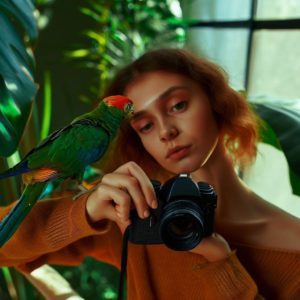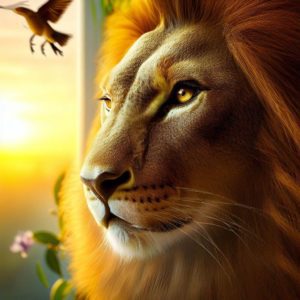The natural world is a vast tableau of life in all its glorious diversity, a vivid canvas showcasing nature’s infinite creativity. Each creature, each landscape, each moment holds a unique story waiting to be told. Wildlife photography is the art of narrating these stories, of capturing fleeting moments and transforming them into enduring symbols of nature’s beauty. But this art is not merely about taking pictures—it’s about observing, understanding, and appreciating the world around us. It’s about patience, resilience, respect, and an unquenchable curiosity about the natural world. This guide, crafted for both seasoned photographers and enthusiastic beginners, seeks to ignite your passion for wildlife photography and equip you with the knowledge and skills to embark on this exhilarating journey.
Section 1:
Gearing Up – Choosing the Right Equipment
In the hands of an artist, tools are not just inanimate objects; they’re vessels of creative expression. Just as a painter needs their brushes, and a sculptor their chisel, a wildlife photographer relies on their equipment to bring their vision to life. But the world of photography equipment can seem like a labyrinth to the uninitiated, filled with technical jargon and a dizzying array of options. Fear not. This section is your compass, guiding you through this complex terrain and helping you equip yourself for your wildlife photography adventure.
The Heart of Your Toolkit: Choosing the Right Camera
At the center of your photography toolkit is the camera—your primary tool for capturing the magic of the natural world. But not all cameras are created equal. DSLRs offer exceptional image quality and versatility, making them a popular choice among professionals. Mirrorless cameras, on the other hand, are lighter and more compact, offering similar image quality with added convenience. For beginners, even a high-end point-and-shoot camera can serve as a stepping stone into the world of wildlife photography. The key is to understand your needs, budget, and comfort level. Consider factors like image resolution, burst mode speed, and low-light performance. Remember, the best camera is not necessarily the most expensive one; it’s the one that enables you to capture your vision effectively.
The Eyes of Your Camera: Understanding Lenses
If the camera is the heart of your toolkit, the lens is its eyes. It shapes how your camera sees the world, influencing factors like zoom, depth of field, and perspective. For wildlife photography, a telephoto lens is a critical asset, enabling you to capture animals from a safe and respectful distance. But don’t overlook the value of other lenses. A wide-angle lens can capture stunning landscapes, providing context for your wildlife subjects. A macro lens can reveal intricate details of smaller creatures and plants. Each lens offers a different way of seeing the world, expanding your creative possibilities.
Stability in the Field: The Importance of a Good Tripod
In the unpredictable environment of wildlife photography, a sturdy tripod can be your steadfast ally. It provides stability, crucial for capturing sharp images, especially when using telephoto lenses. It allows for slower shutter speeds, ideal for low-light conditions or creative shots like blurred motion. A good tripod is durable, lightweight, and flexible, able to adapt to various terrains and heights. Investing in a quality tripod can elevate your photography, providing a stable foundation from which to work.
Additional Gear: Enhancing Your Wildlife Photography Experience
Beyond the camera, lens, and tripod, there’s a world of additional gear that can enhance your wildlife photography experience. A camera bag that protects your equipment and allows for easy access can be a game-changer in the field. Extra batteries and memory cards are essential, ensuring you’re always ready to capture the action. Filters can protect your lens and alter the light entering your camera, offering creative control over your images. And don’t forget about binoculars—a handy tool for spotting wildlife from afar.
Equipping Yourself for the Journey
Choosing the right equipment is a significant step in your wildlife photography journey, but it’s important to remember that gear is not everything. The most powerful tool you possess is not a piece of equipment—it’s your passion, creativity, and willingness to learn. So equip yourself wisely, but don’t let gear obsession overshadow the true essence of wildlife photography: the joy of connecting with the natural world and capturing its beauty through your lens.


